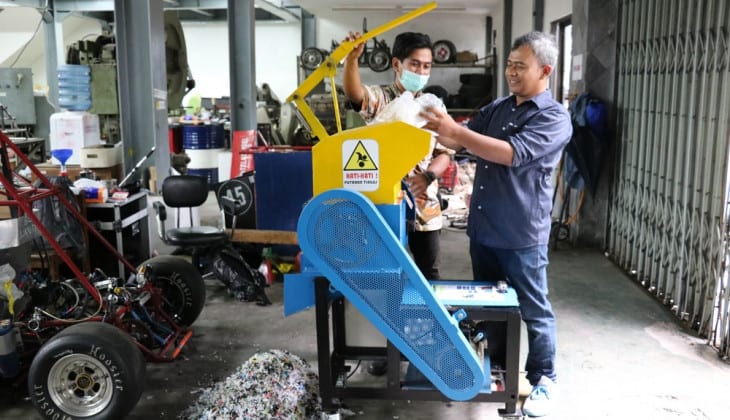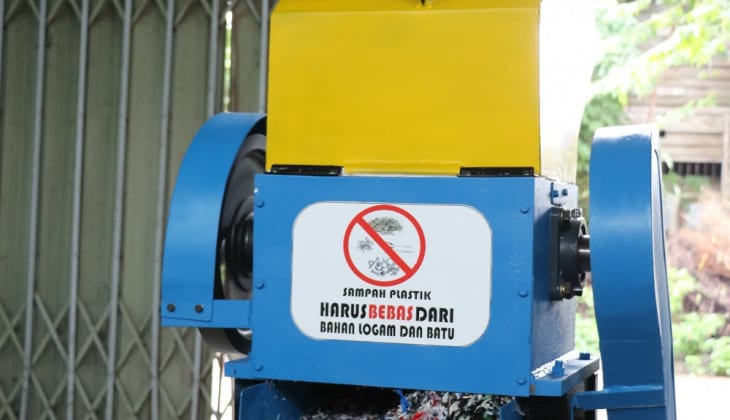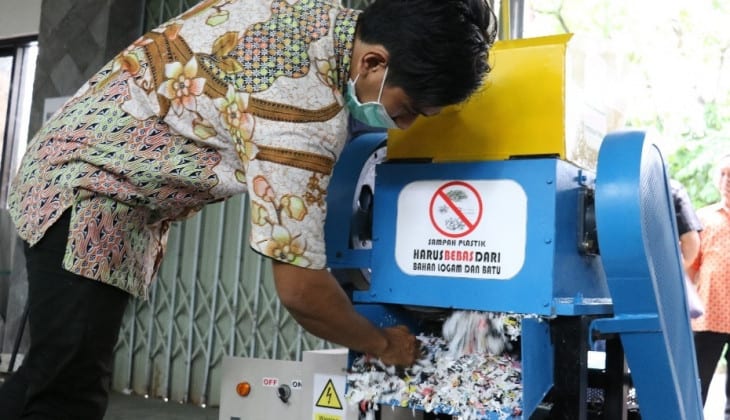


High plastic waste level is still a serious problem facing Indonesia. In fact, Jambeck (2015) places Indonesia as the second largest waste producer after China.
This condition is influenced by plastic use among the community. Everyday people still depend on plastic. The production of plastic bags is also increasing, resulting in more and more plastic waste.
Starting from this condition, the research team from the Department of Mechanical and Industrial Engineering, Faculty of Engineering (FT) UGM sought a solution to overcome plastic waste problems by making a chopper machine for plastic bags. The team was led by Dr. Muslim Mahardika, involving other researchers the Dean of the Faculty of Engineering, Prof. Nizam, Dr. Rachmat Sriwijaya, Sigiet Haryo Pranoto, and Fajar Yulianto Prabowo.
Muslim said the main purpose of this research is to develop plastic waste into value-added products and reduce plastic waste in the community.
“The chopped plastic is used as an asphalt mixture and a plastic recycling material by plastic recycling factories,” he said.
The machine had been developed since early 2018. The project was conducted in line with the request of Ministry of Public Works and Public Housing (PUPR) which requires plastic as an asphalt mixture material for road construction.
Currently, the machine has been mass produced by PT. Barata Indonesia. The machines were distributed by the Ministry of PUPR to local governments and communities in a number of Indonesian regions.
“This machine produces chopped plastic bags that can be adjusted as needed. The size can be set 1-4 millimeters. Meanwhile, plastic chopper machines on the market usually produce a size of about 0.5 cm,” he said on Thursday (13/2).
This plastic chopper also has a number of advantages. It requires low power, 2-5 HP. Similar machines on the market are usually 7-10 HP. One HP is equivalent to 745.7 watts.
This machine is made from six main components: containers for the chopped plastic (hopper), electric motor, flywheel, belt, spindles, and static and dynamic blades. The shape of the machine is not much different from machines on the market. It is 1 meter long, 1.7 meters high and 1 meter wide.
“Most of these machines are made using local components,” he explained.
It works by using an AC electric motor that is transmitted using a fan belt. The blades rotate to chop the plastic with a flywheel which functions as a storage for inertia. The engine speed is between 400-1000 rpm.
“The machine is made with a simple design so it is easy to operate,” he said.
The team developed the plastic chopper in three types based on the capacity of plastic waste chops. The small capacity is of 10-20 kg/hour, medium capacity of 20-30 kg/hour, and large capacity of 40-50 kg/hour.
This innovation is expected to be able to support the government’s efforts in overcoming plastic waste and encourage better plastic waste management in the future.
Source: https://ugm.ac.id/id/berita/17673-atasi.sampah.plastik.ugm.buat.mesin.pencacah



